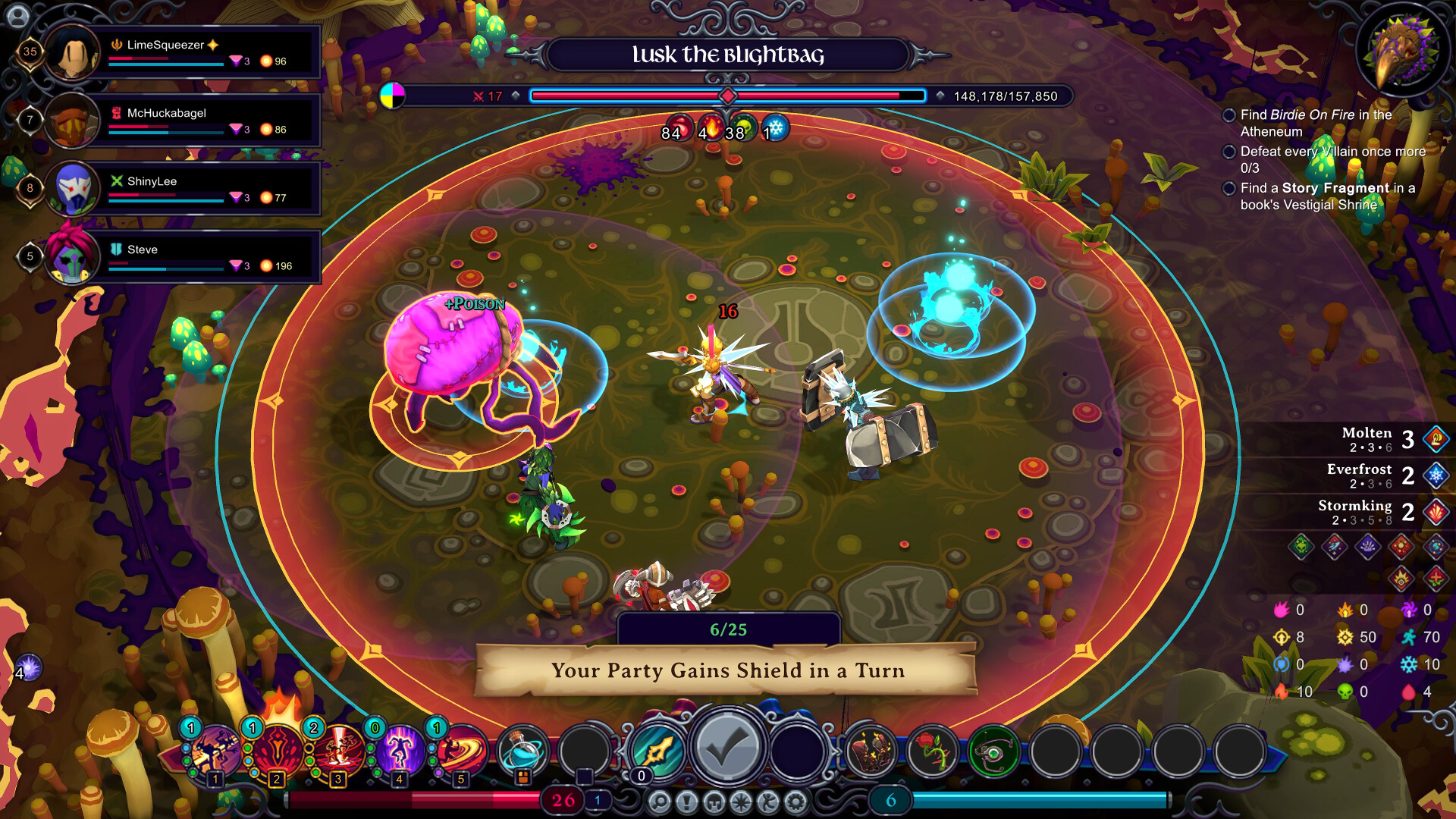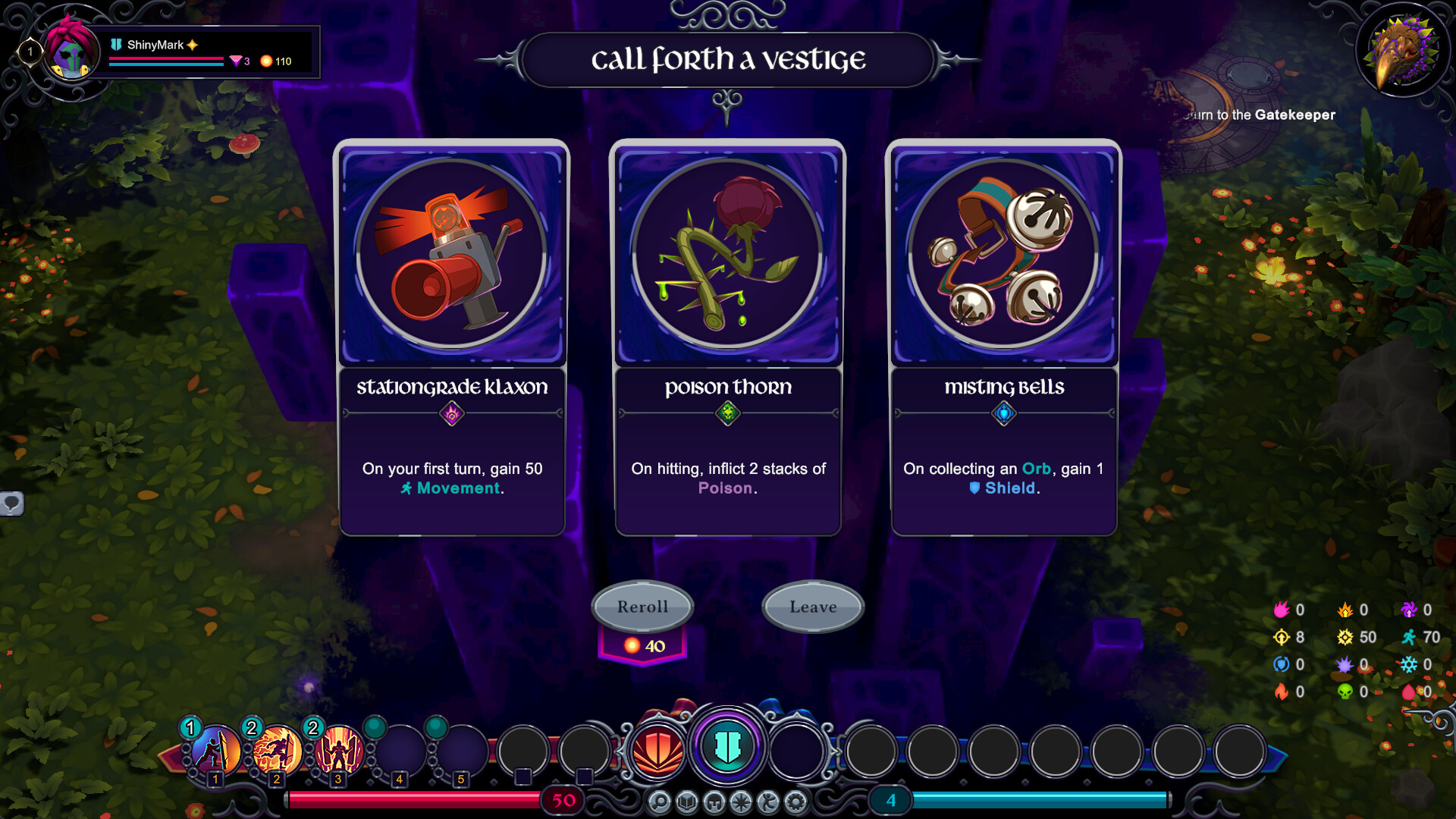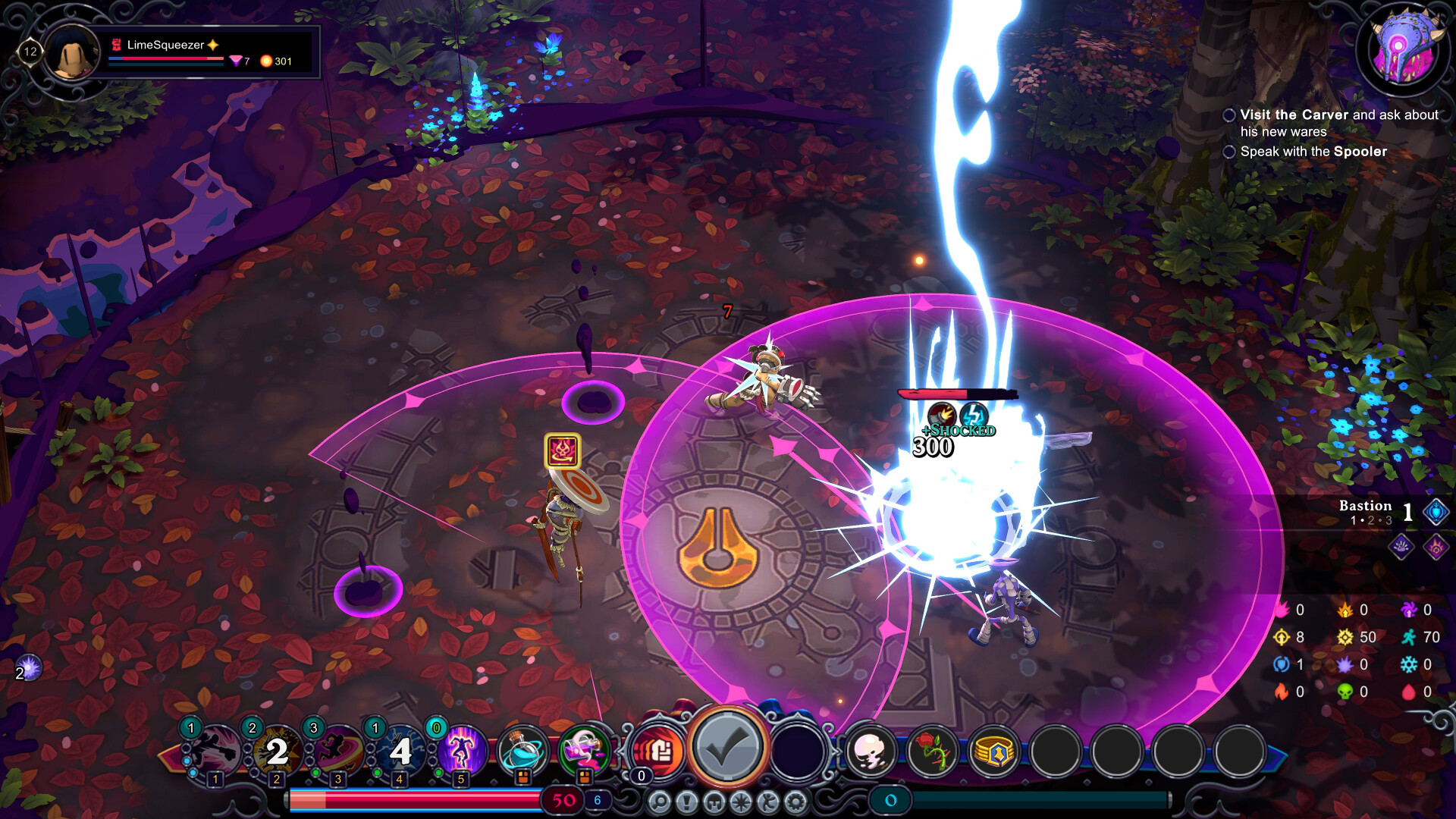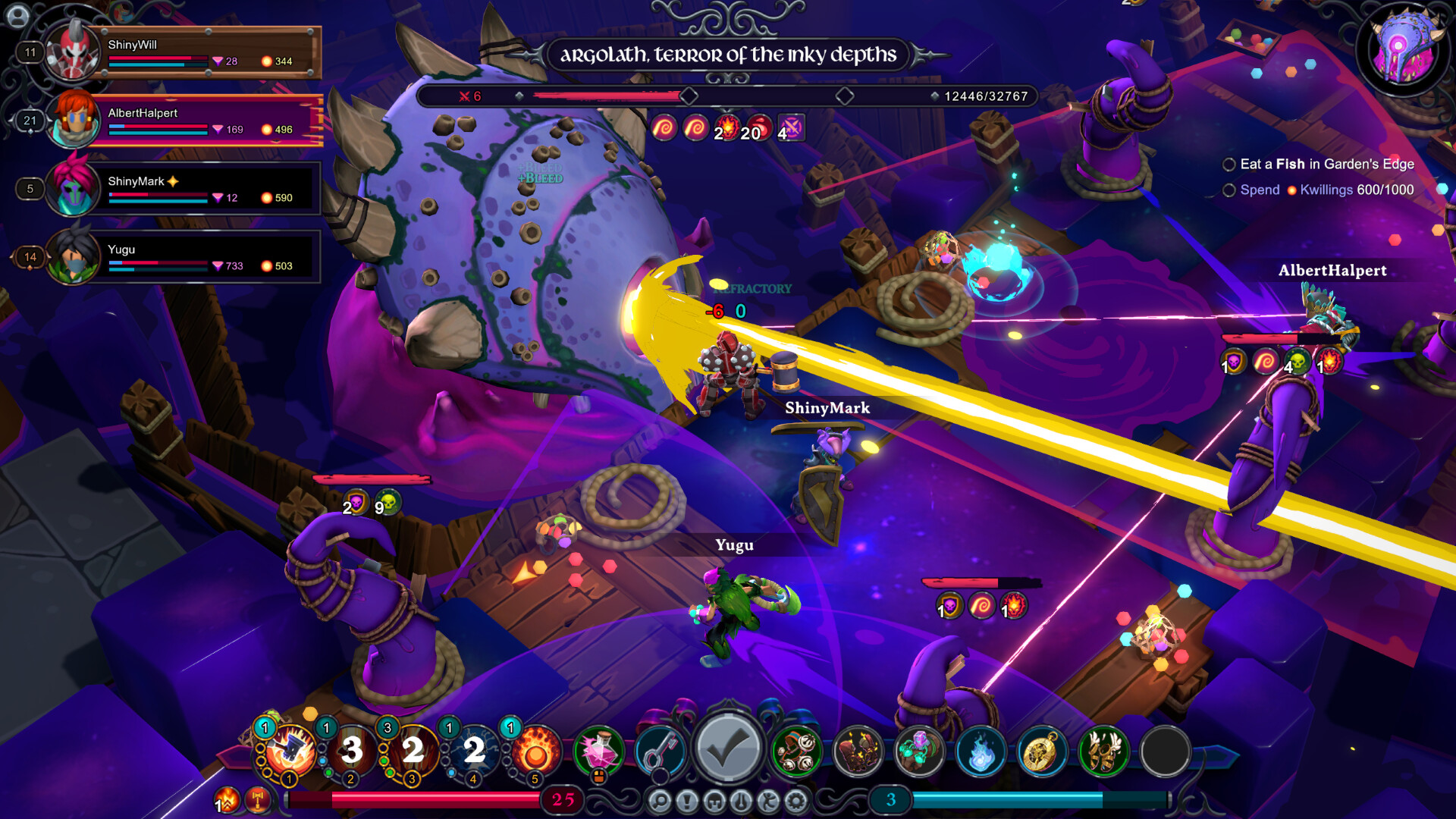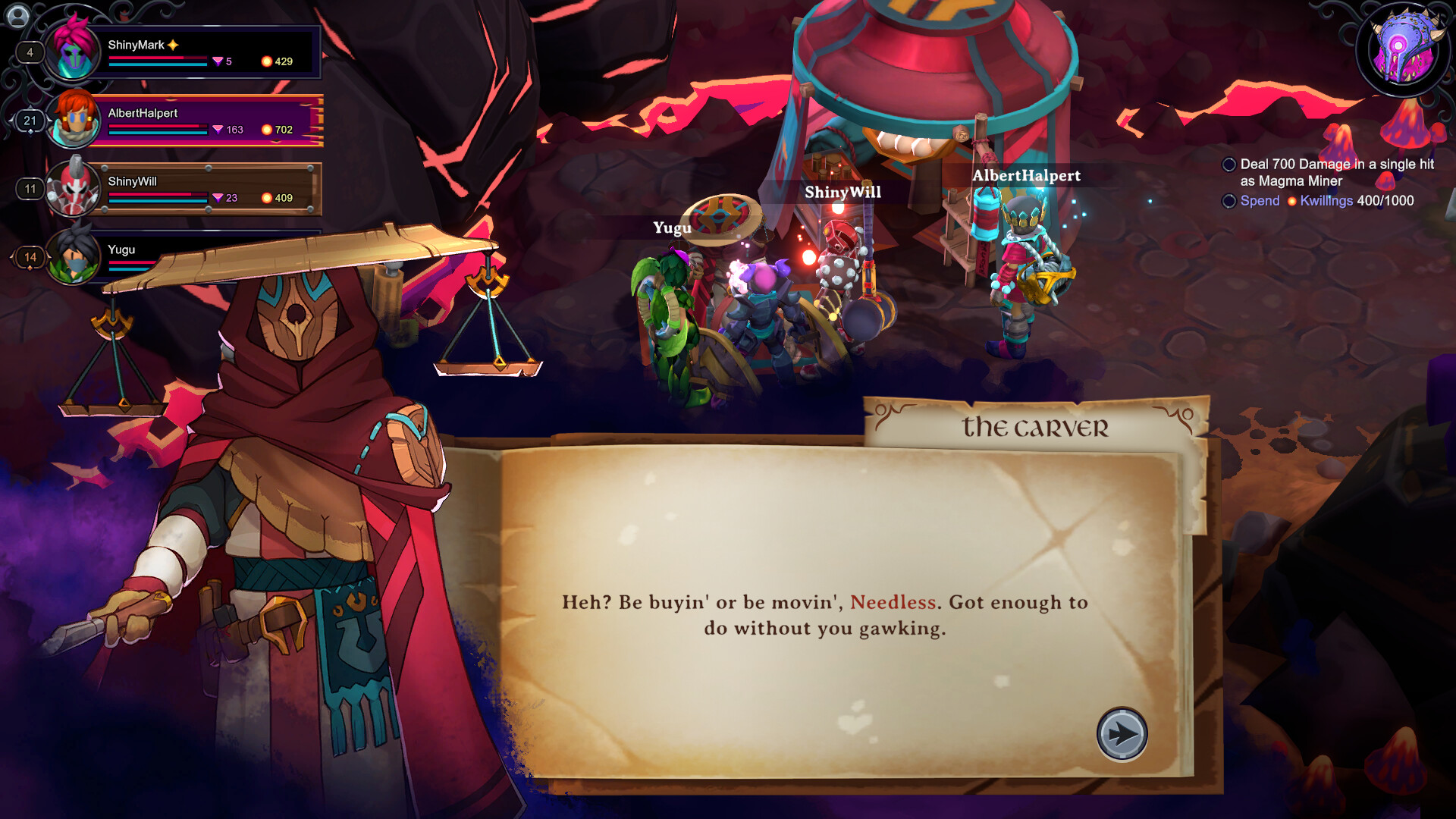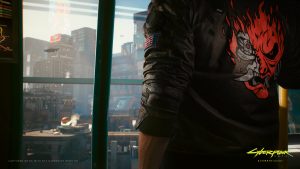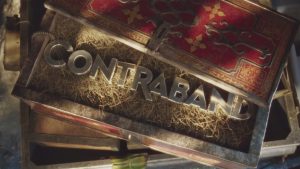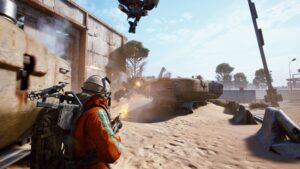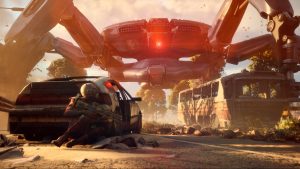
Rogue-like deck-builders are a dime a dozen – creative and distinct, sure, but overwhelmingly prevalent. The sheer creative freedom has resulted in some incredible games, especially for fans who want more. Now Shiny Shoe is back with Inkbound, this time embracing a 3D role-playing approach with turn-based combat. An initial glance may not make it seem like much – roguelike turn-based titles aren’t exactly unique either – but it puts a twist on things and executes them well. You also have different classes, each with fun play styles and abilities to upgrade and ascend in multiple different ways. Also, various passives can enable certain builds, or provide other benefits. There’s also a story that progresses between runs and when completing objectives.
It’s a lot to take in, but that’s one of the beauties of Inkbound. The complexity is the appeal, unraveling naturally and non-threateningly but pushing you to adapt and respond as the difficulty ramps further.
You start as a Needless, emerging from the sea of Ink with little more than a shape and even less of a purpose. After encountering the mysterious beings, Bin and Nib, you gain an Aspect, which serves as a class with unique abilities and defines your overall look. Defeating a Guardian of the Void brings you to the Atheneum, a massive junction of books and stories you can venture into. It turns out that the Blight is slowly engulfing and corrupting the worlds within the books, and the Inkbound, the so-called hero, has shut themselves in to find a solution.
Along with other Needless, it’s your job to venture into the stories and wipe out the Unravelled forming from the Blight, gathering the Ink necessary to keep the Bindery going. There are several questions to answer, like why the collected Ink doesn’t seem enough, why the Inkbound doesn’t venture outside of their study, and, of course, what is causing the Blight.
"Upon entering the void, you can choose from one of three books, each with a different world, characters, enemies and bosses to interact with…"
It’s all intriguing without getting too meta, and each character has an interesting story to tell, whether it’s the Counselor and how easily awkward she is with the Needless, or the happy-go-lucky Spooler and their brother, the serious Tinkerer (both mysteriously never in the same spot at the same time). You also have mysterious figures like the Carver, who left the Atheneum and now plies his trade selling Augments, Bindings and Vestiges. As you get to know them and fulfill their requests, their collective history is revealed – alongside unlocking new items and Aspects that can aid the player through runs.
The audio mixing of some characters can feel a bit low at times, but otherwise, the voice acting is good. Overall, the narrative is well-delivered, not quite having the same immediacy after the opening few hours, but picking up again as you bond with each character.
When starting in the Atheneum, you can choose between a regular run and Daily Challenges. Upon entering the void, you can choose from one of three books, each with a different world, characters, enemies and bosses to interact with (not to mention the unique mysteries and Aspects tied to them). They each look aesthetically pleasing, and the bright yet sickly purple of the Blight intertwines with them quite well. Performance is rock solid at almost all times, despite the odd stutter when hitting multiple enemies with a Binding and simultaneously afflicting them with status effects.
Depending on the routes taken, you could happen upon more challenging enemy encounters (which provide more rewards), rifts with multiple choices to bolster your run (like copying Vestiges or receiving Augments for your Bindings) and breaking down Vestiges for set bonuses. You have a choice at almost every turn and can opt to tone down the challenge if your health is low or you need globules for purchasing Augments and Bindings instead of the more common Kwillings.
"The Aspects themselves are all well-designed and facilitate different kinds of builds and play styles."
When combat starts, you can spend Will to activate different abilities. Orbs will also spawn, granting Will if scooped up while reducing ability cooldowns. After ending your turn, enemies execute their actions simultaneously and so on. The twist is that you can move around in a limited space on your turn, letting you effectively dodge some enemy attacks or reduce damage from those that hit the entire arena. It’s also necessary to avoid the Blight that creeps in from the outer edges, which deals damage if you step in it.
Orbs also grant some movement, but you must judge whether they’re worth collecting immediately to reduce the cooldown on some abilities or later for potential dodging. Though encounters start simply enough, more varied enemies – like those who will prioritize attacking players who hit them first or amplify their teammates – push you to change up some tactics, which further plays into the different Aspect roles.
For instance, maybe you want to get the attention of certain enemies and redirect their attacks towards you when playing as the Obelisk since it can gain Shields with its basic attack, stack Spikes to inflict damage back on enemies and so on.
The Aspects themselves are all well-designed and facilitate different kinds of builds and play styles. The Magma Miner can bonk enemies and leap around to deal damage in an area, building up Heat stacks for more damage, but must end turns with attacks, lest they lose all stacks. The Weaver attaches threads to enemies to gain shielding and Threaded for enhancing their abilities, and distribute damage to all connected foes or pull them towards a point.
"Further adding to this are the Vestiges, which grant passive abilities and bonuses, like gaining additional Will under certain circumstances or reducing the cooldown on your Bindings when picking up Orbs."
Of course, this is a rogue-like, which means you can upgrade Bindings with different Augments over a run, whether it’s inflicting Dazed to reduce an enemy’s damage or reducing their Will cost and cooldown. Bindings also have Ascensions, completely changing how they function and allowing you to specialise further in different play styles.
You can also acquire other Bindings outside the starting three for each Aspect, like Blink for teleporting or Afterimage, which grants a stack of Blur (thus reducing damage by 1 for that turn) and a Critical Charge for a random ability. There’s plenty of variety here, whether you’re playing as an Obelisk that goes all in on spikes and shielding or a Mosscloak that stacks status effects to further aid in burst damage with their shurikens. The opportunity for interplay with other Aspects in multiplayer is also pretty good, which we’ll get to. However, solo play is equally as enthralling, even if some Bindings and Augments are clearly the better options at higher difficulties.
Further adding to this are the Vestiges, which grant passive abilities and bonuses, like gaining additional Will under certain circumstances or reducing the cooldown on your Bindings when picking up Orbs. If you collect Vestiges of a specific set, you get set bonuses for added physical damage, extra health after battles and more. They can even avail additional effects, like spike damage inflicting Pincushion, causing enemies to take 10 percent more damage till the turn ends.
But wait, it gets better – by destroying a Vestige, you permanently gain the equivalent of two pieces in the set bonus. So while you won’t benefit from the damage resist and extra Spiked stacks from Swindler’s Getaway if it’s destroyed, you do get the two-piece set bonus for Pincushion and Warden for a permanent +5 Spiked damage and 10 Damage Resist.
"Once you’ve completed a run, gaining XP from quests and unlocking new Vestiges and cosmetics, you can attempt higher difficulties."
Knowing when to destroy a Vestige and gain its effects and strategically planning which ones to pick up for their set bonuses versus their passive effects can impact more challenging runs. Still, it can lead to some pretty broken effects, like gaining absurd amounts of shielding and Spiked damage to insta-gib enemies who hit you.
Further progressing through the story also unlocks Relics, which can be equipped before runs and provide different benefits, like permanently increasing Magic damage for every little bit of Physical damage dealt and vice versa. I wasn’t a fan of all of them – some provide a two-piece set bonus from the start, which is good but not always the most exciting proposition. Still, there is a decent amount of experimentation.
Guardians await at the end of locations, and they can get tough especially if you don’t kill them fast enough to avoid the encroaching pool of Blight. It’s the Villains who are the real challenge – each possesses even more unique mechanics, like having to defeat medium-sized enemies to cleanse the damage over time stacks that Cynder inflicts or taking out the tentacles of Argolath. Each is fun to fight in its own way, though I found the non-Guardian boss before them to be more challenging due to an excessive number of minions and the Blight.
Once you’ve completed a run, gaining XP from quests and unlocking new Vestiges and cosmetics, you can attempt higher difficulties. Each has a modifier that can make the overall run more challenging, and while they may not seem terrible on their own, they stack with previous tiers. There are also Book Modifiers which further add to the challenge, like causing enemies to heal or gain damage resist each turn.
"Perhaps the only downside is that environments are all fundamentally the same in terms of structure and layout."
While you do gain some rewards for opting into the challenge, these provide a slight edge rather than neutralizing any negative modifiers. While Difficulty 1 and 2 felt pretty good, Difficulty 3 felt slightly overtuned with the penultimate boss. Maybe further tuning is required, but it felt like such a baffling contrast, even on lower difficulties, compared to the final Villain.
This is probably where bringing in other players becomes necessary, and Inkbound allows for matchmaking with others pretty seamlessly. Multiplayer also brings a new dimension to combat since you’re considering your teammate’s Aspect and unconsciously coordinating with them but also looking to maximize your positioning and Orbs on the field (which are more in number). Enemies are tankier, which makes sense but makes you wonder how things will fare at higher difficulties. As it stands, Inkbound is a very enjoyable solo experience but shines all the more in multiplayer.
It does tend to get repetitive, which the overall genre can suffer from now and again, but it scratches that feeling of “one more run,” and multiplayer is a great facilitator in that regard. Perhaps the only downside is that environments are all fundamentally the same in terms of structure and layout. The overall flow of Garden’s Edge and Silent Promenade is pretty much the same despite their wildly different atmosphere and settings.
"Inkbound may not immediately grab you, even with its unique premise and gorgeous visuals. It’s when you dive into combat that things start to click."
Outside of meeting specific characters, they don’t have unique rooms or mechanics to consider when progressing. While it’s somewhat understandable to homogenize things, especially for multiplayer, I would have appreciated a little variety to make them stand out from the pack.
The overall progression is more focused on granting new Vestiges that appear in runs and Keys for unlocking new Relics than permanent power increases that persist between runs. Though it originally had monetization in early access, this has been removed in favor of Dust to purchase cosmetics from previous seasons. Character customization is decent – nothing too over-the-top initially, but you get some decent cosmetic pieces for free.
Inkbound may not immediately grab you, even with its unique premise and gorgeous visuals. It’s when you dive into combat that things start to click. There are extensive quests and challenges to complete and leaderboards to compete solo and with a group, so plenty will keep you busy. Despite some quibbles, its build variety and multiplayer make it one of the more solid turn-based rogue-likes available.
This game was reviewed on PC.
Innovative turn-based combat encourages strategy and adaptation. Each Aspect brings something unique, with an array of Augments, Relics and Vestiges for extensive build variety. The narrative presents an intriguing mystery with likeable characters. Gorgeous aesthetics with catchy music. Seamless matchmaking and co-op. More challenging difficulties further mix up the gameplay.
Some bosses on Difficulty 3 onwards can feel a little over-tuned. Audio mixing of some voice actors feels a little quiet. The gameplay flow between environments is pretty much the same, leading to some repetition.









